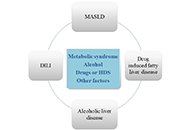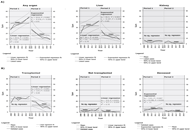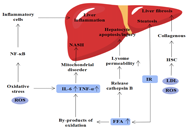4 results in Exploration of Digestive Diseases
Latest
Sort by :
- Latest
- Most Viewed
- Most Downloaded
- Most Cited
Open Access
Review
Deciphering the liver enigma: distinguishing drug-induced liver injury and metabolic dysfunction-associated steatotic liver disease—a comprehensive narrative review
Miren García-Cortés ... Alberto García-García
Published: December 27, 2023 Explor Dig Dis 2023;2:318–336
This article belongs to the special issue Drug-induced Liver Injury: From Bench to Clinical Application

Open Access
Original Article
The significance of chronic hyperglycemia for the reduced efficacy of eradication therapy in patients with type 2 diabetes mellitus and for Helicobacter pylori survival
Luiza Gilmanovna Bektemirova ... Vasiliy Ivanovich Reshetnyak
Published: December 27, 2023 Explor Dig Dis. 2023;2:305–317
This article belongs to the special issue Helicobacter Pylori and Infection: Genomics, Diagnosis, Pathogenesis, Antibiotic Resistance, Microbiota, Cancer, Prevention and Therapeutics

Open Access
Original Article
Impact of the direct acting antivirals on chronic hepatitis C prevalence on the Swiss organ transplantation list: a retrospective analysis
Luis Falcato ... Franz Immer
Published: December 25, 2023 Explor Dig Dis. 2023;2:297–304
This article belongs to the special issue Chronic Hepatitis B and C

Open Access
Review
Therapeutic targets for metabolic dysfunction-associated steatotic liver disease and their roles in hepatocellular carcinoma
Chenyu Wei ... Xianguang Yang
Published: December 13, 2023 Explor Dig Dis. 2023;2:282–296

Journal Information
 Previous
Previous